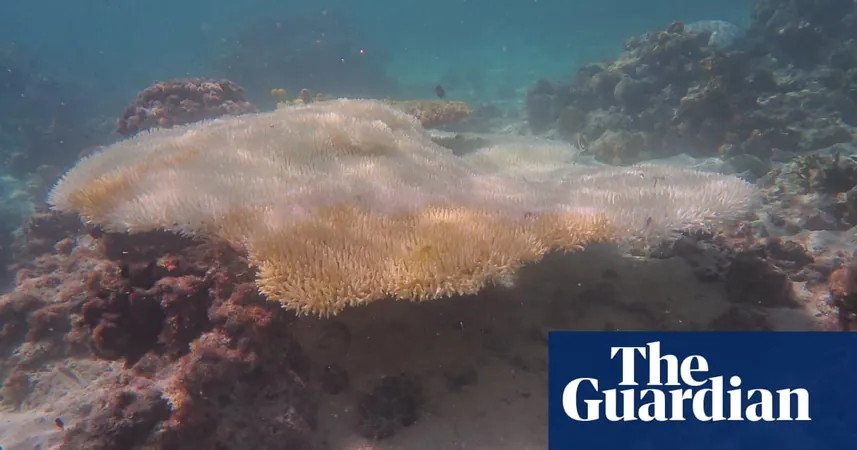
Catastrophe Strikes: The Great Barrier Reef Faces Unprecedented Coral Bleaching Crisis
2025-01-22
Author: Ying
Introduction
A new alarming study reveals that over 40% of the coral colonies monitored at One Tree Island within the Great Barrier Reef were devastated by an extensive coral bleaching event last year. This incident has been deemed the most widespread bleaching outbreak recorded in the reef's history, raising serious concerns among scientists and environmental advocates.
Study Findings
In their investigation, researchers observed a staggering decline in the vitality of 462 coral colonies after heat-induced stress began to bleach them white in early 2024. Initial reports described “catastrophic” scenes, where just 92 coral colonies emerged unscathed from the bleaching. By July, the study's conclusion, 193 colonies were already dead, and an additional 113 displayed ongoing signs of bleaching.
Expert Commentary
Prof. Maria Byrne, a marine biologist from the University of Sydney and the lead author of the study, expressed her devastation at witnessing such large and majestic coral colonies perish. “Seeing those really massive colonies die was heart-wrenching,” she stated. “After years of advocating for climate change awareness, it feels like our warnings are falling on deaf ears.”
Australian Institute of Marine Science Report
In November, the Australian Institute of Marine Science (AIMS) surveyed eight reefs within the Capricorn-Bunker sector and reported the largest annual decline in hard coral cover since monitoring began in the mid-1980s, with a staggering 41% drop. The northern regions of the reef reflected similar distress, leading one government scientist to describe a tragic “graveyard of corals” in certain areas.
Research Methodology
Beginning their study in early February, the research team employed temperature loggers, video surveillance, and direct observations to assess the health of 12 different coral species. Their findings were disheartening. They noted that while corals have the capacity to recover from milder cases of bleaching when water temperatures cool down, the severity of their observations at One Tree Island indicates that many corals are facing fatal outcomes this time.
Vulnerable Species
Among the particularly vulnerable species was Goniopora, a durable coral known for its vibrant, flower-like polyps. This genus was not only bleached but also showed signs of a detrimental flesh-eating disease known as black band. Prof. Byrne declared it the worst bleaching situation documented at One Tree Reef, voicing concerns for the remaining bleached corals which are left in a precarious state—capable of recovery or doomed to die.
Coral Conservation Concerns
Dr. Shawna Foo, a coral conservation scientist and co-author of the study, remarked on the tragic transformation many colonies underwent during their five months of monitoring. “It was disheartening to witness. Many colonies were unrecognizable; overtaken by algae or crumbled beyond recovery,” she shared.



 Brasil (PT)
Brasil (PT)
 Canada (EN)
Canada (EN)
 Chile (ES)
Chile (ES)
 Česko (CS)
Česko (CS)
 대한민국 (KO)
대한민국 (KO)
 España (ES)
España (ES)
 France (FR)
France (FR)
 Hong Kong (EN)
Hong Kong (EN)
 Italia (IT)
Italia (IT)
 日本 (JA)
日本 (JA)
 Magyarország (HU)
Magyarország (HU)
 Norge (NO)
Norge (NO)
 Polska (PL)
Polska (PL)
 Schweiz (DE)
Schweiz (DE)
 Singapore (EN)
Singapore (EN)
 Sverige (SV)
Sverige (SV)
 Suomi (FI)
Suomi (FI)
 Türkiye (TR)
Türkiye (TR)
 الإمارات العربية المتحدة (AR)
الإمارات العربية المتحدة (AR)